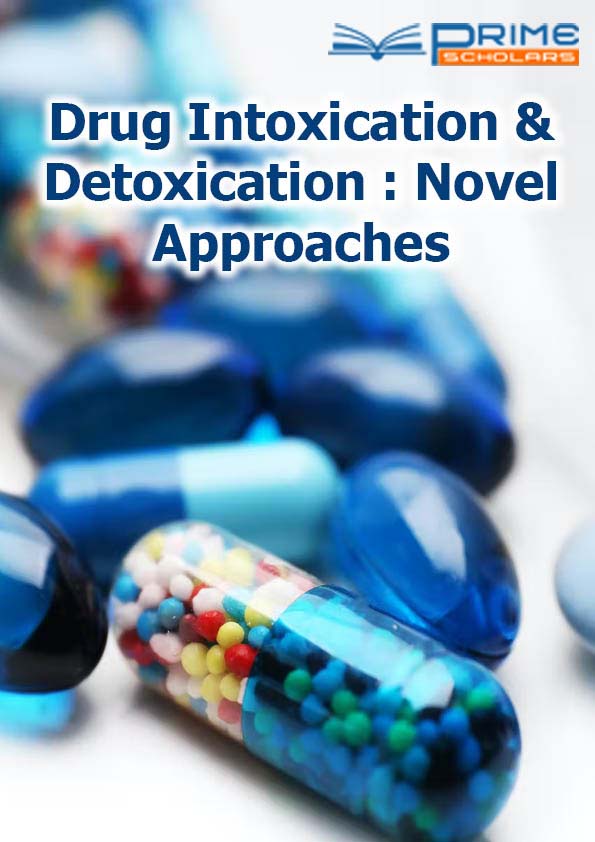Opinion - (2022) Volume 3, Issue 5
A Multifactorial Neuropsychiatric Disorder and its Outcomes: Schizophrenia
Maha Lokman*
Department of Health Sciences, Louisiana State University, United States
*Correspondence:
Maha Lokman,
Department of Health Sciences, Louisiana State University,
United States,
Email:
Received: 30-Nov-2022, Manuscript No. DIDNA-22-15309;
Editor assigned: 02-Dec-2022, Pre QC No. DIDNA-22-15309 (PQ);
Reviewed: 16-Dec-2022, QC No. DIDNA-22-15309 ;
Revised: 21-Dec-2022, Manuscript No. DIDNA-22-15309 (R);
Published:
28-Dec-2022, DOI: 10.36648/DIDNA 3.5.22
INTRODUCTION
Schizophrenia (SCZ), a prevalent neuropsychiatric disorder,
affects approximately 1% of the general population and interferes
with social and intellectual activities. It occurs prematurely,
usually between the ages of 15 and 30, and worsens over
time. Schizophrenics have a high mortality rate and a short
future, unlike sober individuals. This may reflect an increased
pace of self-destruction and a higher incidence of physical illness.
Schizophrenia is described by safe side effects neurosis
and visualization, pessimistic side effects deep containment
and decreased social behavior, and intellectual disability learning
and memory problems.
Description
Mental deterioration is considered a central component of
the disease, beginning in the formative years and continuing
throughout the course of the disease. Therefore, this should
be considered when administering to patients with schizophrenia.
Alterations in cerebral science, particularly in relation to
dopaminergic, glutaminergic, serotonergic, and cholinergic
frameworks, may be meaningful with SCZ pathogenesis. Previous
studies have shown that SCZ is significantly associated
with glutamate excitotoxicity, resulting in dopaminergic hyperactivity
and decreased Gamma-Amino Butyric Acid (GABA)
levels. In addition, cholinergic dysfunction such as decreased
acetylcholine levels may contribute to the mental impedance
of SCZ. Cerebral determining neurotrophic factor is an abundant
neurotrophin in the brain that has been shown to be a
fundamental component of SCZ pathogenesis. Low BDNF levels
are associated with improved SCZ side effects. There is increasing
evidence that oxidative stress and neuro-inflammation are
involved in the pathophysiology of SCZ. The hypothesis is that
elevated levels of Receptive Oxygen Species (ROS) coupled
with depletion of cancer preventive drug limits may support decreased levels of neuroprotection and brain injury in the
SCZ. Enhanced activation of cerebellar microglia and support
for stimulating serum cytokine levels was recently reported in
clinical and exploratory studies of this disease. Furthermore,
apoptotic tasks in SCZ neuropathology have been found to involve
both innate mitochondrial damage and extrinsic death
receptor pathways. Oxidative stress, NMDA rupture, glutamate
excitotoxicity reduced BNDF levels and widespread calcium
tides, alone or in combination, may create an environment favorable
to apoptosis. Despite the availability of antipsychotic
prescriptions, possible side effects are associated with stiffness,
tremors, and gait irregularities. Moreover, in this mood of
mental retardation and negative side effects, antipsychotics are
ineffective. The high likelihood of oxidative stress and exacerbations
has led to advocates for incorporating domestically developed
psychotropic drugs alone or in combination with other
beneficial specialists into clinical practice. Prodigiosin (PDG) is a
promising organically dynamic random metabolite secreted by
actinobacteria, alteromonas rubra, serratia rubidaea, serratia
marcescens and changes.
Conclusion
A critical cycle in the pathogenesis of hippocampal apoptosis
initiated. This review identified an association between increased
bax levels and decreased bcl-2 levels histopathological
findings. This apoptotic effect is oxidant, receptive oxygen. In
summary, this study provides intelligent insight into the unmistakable
restorative effects of PDG and selenium. Joint feeding
to SCZ rodents, anti-schizophrenia movement should be on
both defence professionals employed to improve cholinergic
and dopaminergic neurotransmission and decrease hippocampal
joint. In addition, both defence specialists expanded the
degree of neurotrophic factors that significantly improve social
behaviour in sick rodents.
Citation: Lokman M (2022) A Multifactorial Neuropsychiatric Disorder and its Outcomes: Schizophrenia. Drug Intox Detox: Novel
Approaches. 3:22.
Copyright: © 2022 Lokman M. This is an open-access article distributed under the terms of the Creative Commons Attribution
License, which permits unrestricted use, distribution, and reproduction in any medium, provided the original author and source
are credited.
